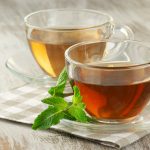LOWER high blood pressure by drinking THIS popular beverage
 (NaturalHealth365) According to the U.S. Centers for Disease Control and Prevention (CDC), about 45 percent of Americans have high blood pressure (hypertension) or are taking a high blood pressure medication. Like other medications, antihypertensive drugs are no stranger to side effects; commonly reported ones include dizziness, diarrhea, and lightheadedness.
(NaturalHealth365) According to the U.S. Centers for Disease Control and Prevention (CDC), about 45 percent of Americans have high blood pressure (hypertension) or are taking a high blood pressure medication. Like other medications, antihypertensive drugs are no stranger to side effects; commonly reported ones include dizziness, diarrhea, and lightheadedness.
While you shouldn’t stop taking any medications without your doctor’s consent, switching out your morning cup of coffee for a mug of black tea or green tea may help you get better control of your blood pressure.
New study sheds light on why drinking green tea and black tea may help manage high blood pressure and improve heart health
It’s not unheard of in the medical and scientific community to hear that sipping on some green or black tea could improve one’s cardiovascular function. According to the American Heart Association (AHA), green and black tea contain antioxidants called polyphenols which are shown to support heart health and lower blood pressure. The AHA also notes tea preserves “good” HDL cholesterol while reducing “lousy” LDL cholesterol, as well as lowering blood sugar levels, all of which are important for heart health.
But regarding tea’s anti-hypertensive effects specifically, how does the second most consumed beverage in the world have such a powerful effect?
The new study in question, based out of the University of California, seeks to clarify this mystery. Publishing their results in the latest volume of Cellular Physiology and Biochemistry, the study’s authors performed lab tests to conclude that two flavonoids in green and black tea – called epicatechin gallate and epigallocatechin-3-gallate – activate an ion channel found within blood vessel walls. By activating this ion channel, potassium ions can leave cells, which ends up relaxing blood vessels.
In simplistic terms, the more relaxed blood vessels are, the lower the blood pressure.
A limitation of this study is that it was performed in a laboratory setting and was not a randomized controlled trial involving humans. Just because something can be produced in a lab doesn’t necessarily mean the results will translate to meaningful benefits on human lives. However, the study does add helpful context to the decades of prior research revealing a link between tea drinking and improved blood pressure.
Brew the perfect cup: Here’s how to select and prepare a great cup of green or black tea
Green and black tea come from the same plant but are processed differently (black tea leaves are rolled and exposed to air to trigger oxidation, whereas oxidation is prevented in green tea leaves). For the highest quality, look for organic tea leaves. If you’re not using loose-leaf teas, look for a product made with plastic-free tea bags.
For black tea, steep your leaves in boiling water for about 3 to 5 minutes. Green tea should be done steeping after 3 minutes, too. Don’t over-steep, as this can cause your tea to taste bitter.
Toss your teabags when done, or save for DIY hacks like a refreshing eye mask; many find that placing cool teabags on their eyes for a few minutes temporarily reduces the appearance of puffiness and dark circles, likely thanks to the tea’s caffeine content.
And on that note:
Even though black tea and green tea contain less caffeine than a regular cup of coffee, these teas still contain around 30 to 50 mg in every serving. If you’re sensitive to caffeine, avoid consuming these teas later in the day to avoid sleep issues.
Sources for this article include:
CDC.gov
AHAjournals.org
Rxlist.com
MayoClinic.org
ScienceDaily.com
NIH.gov
Heart.org
Cellphysiolbiochem.com



